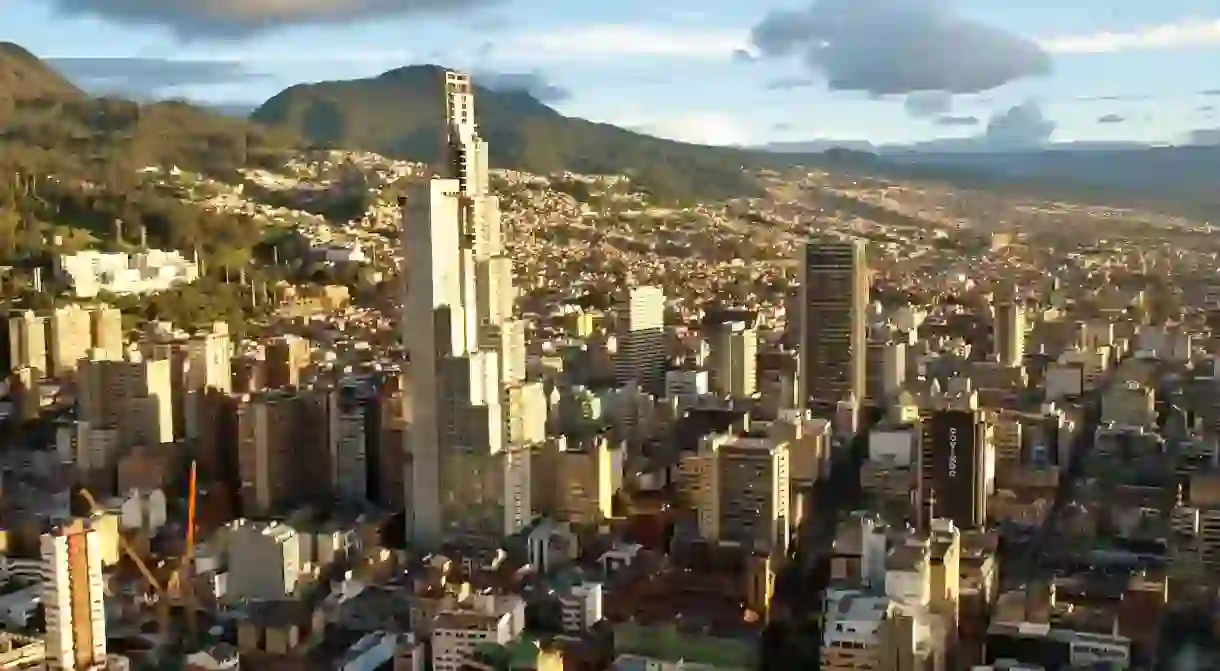The Ultimate Tour of Bogota's Postmodern Architectural Landmarks

Colombia‘s architecture has been heavily influenced throughout history by Spanish culture, as well as by French, English, and American architecture. Colombia’s cities vary dramatically between these architectural styles, along with colonial and postmodern-style architecture. Bogotá, Colombia’s capital, has been heavily influenced by different types of architecture, with colonial buildings situated next to modern structures. We take a tour through Bogota’s postmodern architectural buildings.
Luis Ángel Arango Library
Building, Concert Hall, Library

The Luis Ángel Arango Library was opened in 1958, designed by Colombian architect Rafael Esguerra, part of the Esguerra Saenz Urdaneta Samper firm. The Luis Ángel Arango Library is one of the most important libraries in Latin America, containing over 1.1 million books, 12 reading rooms, a 367-seat theatre and receives over 5,000 visitors a day. The unique building is of architectural importance, has panoramic city views on the top floor, and complements the surrounding colonial buildings of La Candelaria, while still following postmodern architectural themes.
Parque Simón Bolívar
Park

Simón Bolívar Park is a public green space, covering over 360 acres (1.45 sq. km.) in the center of Bogotá. Construction began in 1966, and continued to develop over the the following 30 years. Architect Arturo Robledo Ocampo was in charge of creating improvements to the park in 1982, at which time he planted 3,300 trees along with other improvements. The park has undergone continued development, managed by the District Institution of Recreation and Sports. Two temples have been erected: the first for the 39th International Eucharistic Congress in 1968, and the second was built in 1986 to commemorate Pope John Paul II’s visit to the city. The park is now an important landmark within the city, for weekend activities, relaxing, exploring the gardens, and for festivals and events.
Bogotá Museum of Modern Art
Museum

Bogotá Museum of Modern Art (MAMBO), was designed by architect Rogelio Salmona between 1971 and 1988. The sleek four-story building has clean lines and a perfect example of postmodern architecture in Colombia. The museum is home to modern art of the 20th century and has a number of exhibition halls.
Torre Colpatria
Building

Torre Colpatria is a 50-story skyscraper built in downtown Bogotá in 1979, stretching 643 feet (196 meters ) into the sky. The Torre Colpatria was the tallest building in Colombia from 1978 to April 2nd 2015. The building is home to the Colpatria Bank Headquarters, as well as a number of banks and financial corporations. Torre Colpatria has a square bottom, with concrete facade pillars and vertical bars glazing unbroken from the ground to the roof; this gives lots of light to the offices and allows for panoramic views from the top floor. Each night the building’s concrete pillars are illuminated with LED lights and is a landmark that dominates downtown Bogotá.
Las Torres del Parque
Las Torres del Parque was also designed by the architect Rogelio Salmona and was completed in 1968. This area is made up of three individual high rise buildings, in the postmodern orange brick style, which are home to apartments and gardens. This architectural marvel was designed to create harmony between the city and the environment, allowing residences and public spaces to be combined.
BD Bacatá
Building

BD Bacatá is the tallest building in Colombia and second tallest in South America. The building has 67 stories, reaching 850 feet (260 meters) above the Bogotá skyline; construction began in 2011, but was designed long before this date. The building is made up of two individual buildings, connected by bridges and will be completed in late 2017. The BD Bacatá will be home to offices, retail spaces, apartments, and a hotel. The two buildings are made predominantly from glass, aluminum, and concrete, and the budget of COP$240 million was financed by 3,800 private investors.
Centro de Comercio Internacional
Building
Centro de Comercio Internacional is a 50-floor, 623-foot-tall (190-meter) building, which in 1977 was the tallest building in Latin America. The building is home to Davivienda Bank, and is constructed almost entirely of glass. The building was designed by architectural firm Cuéllar Serrano Gómez y Cía, and work began on the building in 1970.













